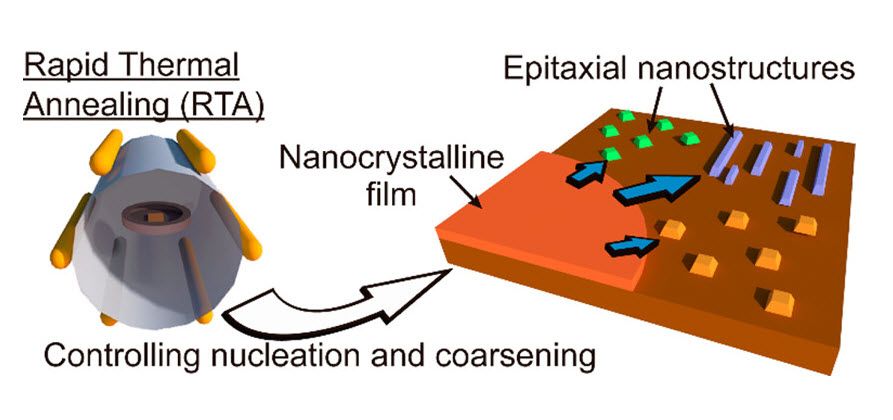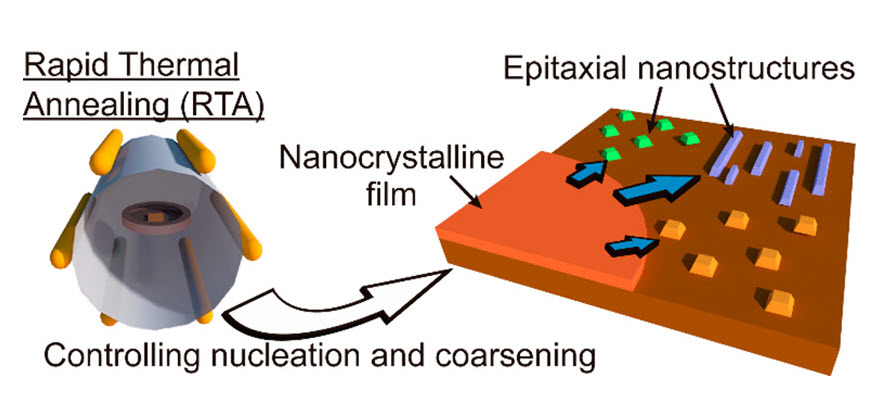
Unveiling the Nucleation and Coarsening Mechanisms of Solution-Derived Self-Assembled Epitaxial Ce0.9Gd0.1O2–y Nanostructures

Albert Queraltó*, María de la Mata, Jordi Arbiol, Ruben Hühne∥, Xavier Obradors, and Teresa Puig. Cryst. Growth Des., 2017, 17 (2), pp 504–516. DOI: 10.1021/acs.cgd.6b01358
Self-assembling approaches based on chemical solution deposition (CSD) are ideal methods for the cost-effective production of epitaxial nanostructures with high throughput. Therefore, an in-depth investigation of the nucleation and coarsening processes involved in the self-assembly of nanostructures is mandatory to achieve a good control over nanostructure shape, dimensions, and orientation. Heteroepitaxial Ce0.9Gd0.1O2-y (CGO) is an ideal model system to unveil the underlying nanostructure development mechanisms in addition to their promising properties for catalysis, gas sensors, and ionic conductivity. Rapid thermal annealing furnaces have been used to study separately the thermodynamic and kinetic nucleation and coarsening mechanisms of self-assembled CGO isotropic and anisotropic nanostructures based on strain-engineering and surface energies control. Different CGO nanoislands are obtained: isotropic (001)CGO nanodots are grown on (001)-oriented Y2O3:ZrO2 (YSZ) and LaAlO3 (LAO) substrates, whereas (011)LAO substrates promote the growth of elongated (011)CGO nanowires. HRTEM and RHEED analyses are used to study the early stages of nucleation, as well as the shape and interfacial structure of CGO nanostructures. A systematic study with the heating ramp, annealing temperature and time, and strain in combination with thermally activated theoretical models provides information on the nucleation behavior, nucleation barriers, and atomic diffusion coefficients along in-plane and out-of-plane island orientations. Highly anisotropic atomic diffusion constants have been shown to be at the origin of the high aspect ratios of some of the nanostructures. Overall, our study provides a general method for the evaluation of nucleation and coarsening of multiple CSD-derived oxide nanostructures and understanding the shape development by combining thermodynamic and kinetic approaches.

